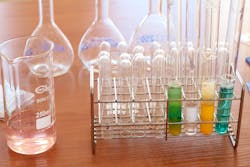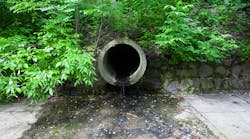Gibbsboro, NJ (December 26, 2019) — The public comment period for the US Environmental Protection Agency's proposed cleanup of the Sherwin-Williams/Hilliards Creek Superfund Site in Gibbsboro, NJ, has been extended to January 29, 2020. The proposed plan includes a combination of technologies and methods to address the former paint manufacturing plant and adjoining areas. EPA's study of these areas shows that soil and sediment are contaminated with arsenic and lead and soils in other areas are contaminated with paint solvents.
EPA’s cleanup plan addresses a nearly 20-acre area where the former manufacturing plant operated, the headwaters of Hilliards Creek and adjoining areas, which includes approximately six residential properties. In the former manufacturing plant area, the plan includes removing and disposing of approximately 67,000 cubic yards of contaminated soil from the site and backfilling with clean soil, groundwater monitoring, and institutional controls in the form of deed notices.
Floodplain soil and sediment within Upper Hilliards Creek would be excavated and disposed of off-site and surface water will be monitored. The wetland areas will be restored with vegetation and soil similar in nature to previously existing wetlands.
In areas where paint solvents are present, the EPA is calling for the treatment of harmful chemicals through subsurface treatment. Certain areas containing soil contaminated with paint solvents may also be treated at the site by injecting non-hazardous additives to the subsurface soil to promote the biological breakdown of contaminants. The specific types of additives to be used will be determined by the EPA as part of the design of the cleanup. Soil gas collection systems will also be installed to collect and treat any harmful vapors.
Throughout the cleanup, EPA will monitor and further study the cleanup progress to ensure the effectiveness of the remedy. EPA will conduct a review of the cleanup every 5 years to ensure its effectiveness. Under the proposed plan, the estimated cost of cleanup is approximately $36 million.
For more information on submitting a comment on the proposed plan, click here. To view EPA's proposed plan for the site, visit www.epa.gov/superfund/sherwin-williams.






